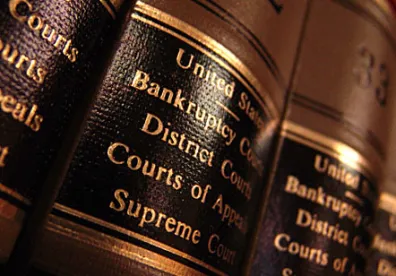On October 29th, the the liquidating trustee of the Radio Shack liquidating trust filed lawsuits in the United States Bankruptcy Court for the District of Delaware seeking to claw back “preferential” payments made by Radio Shack to its creditors. These payments were made within the 90 days of its bankruptcy filing on February 15, 2015.
The creditors sued in these cases include, among others, landlords, utility providers, banks, logistics companies and providers of electronic goods. All totaled, approximately 200 creditors were sued for allegedly being “preferred.” These creditors undoubtedly provided valuable services and goods that Radio Shack accepted and used prior to filing for bankruptcy protection.
Additionally, many of these creditors likely had outstanding receivables as of the date Radio Shack filed for bankruptcy, which may never be paid. Under these circumstances, it is easy to understand why vendors might feel outraged upon receipt of a preference complaint.
Leveling the Playing Field
So why then are creditors such as Fedex, PSE&G and Olympus – all of whom are being sued – potentially exposed to paying back Radio Shack’s bankrupt estate for goods and services that were accepted by and provided benefit to Radio Shack?
The answer is found in section 547(b) of the bankruptcy code, which provides that as a matter of law, any payments made to or for the benefit of a creditor on account of an antecedent debt during the 90 days leading up to a bankruptcy are recoverable by the debtor or successor trustee. This statute was intended to level the playing field for all creditors by not allowing a creditor to receive more than it would normally recover in the bankruptcy case. Congress did not want debtors to “prefer” certain creditors as a bankruptcy approached while still not paying other disfavored creditors.
Among other things, personal guarantees of principals may incentivize payment to preferred creditors while leaving non-recourse creditors out in the cold.
Subsequent New Value Defense
Even if a debtor or trustee establishes the necessary elements to prove that a payment was preferential, creditors can still prevent claw back of the payments. The Bankruptcy Code sets forth several affirmative defenses which can help limit or completely wipe-out creditors’ exposure to preference claims. One of the strongest defenses is set forth in Section 547(c)(4) of the Bankruptcy Code, which provides that a payment to a creditor cannot be avoided as a preference:
“…to the extent that, after such transfer, such creditor gave new value to or for the benefit of the debtor –
Not secured by an otherwise unavoidable security interest; and,
On account of which new value the debtor did not make an otherwise unavoidable transfer to or for the benefit of such creditor.”
To put this more clearly, to the extent that a creditor provided services or goods to the debtor subsequent to the preferential payment, the value of the goods or services provided will reduce, or potentially eliminate, the prior preferential payment. By way of example, if (hypothetically) Olympus received a payment of $5,000 from Radio Shack on December 15, 2014 – two months prior to the bankruptcy filing – and then subsequently on December 20, 2014, delivered $7,000 worth of cameras to Radio Shack, the $5,000 preference liability would be completely wiped out, with an excess of $2,000 in new value.
If, however, another payment was received by Olympus on January 15, 2015, the $2,000 new value excess from the December 20, 2014 shipment would not carry over as a defense to the preference claim. The purpose of the new value defense is to encourage vendors to continue doing business with, and extending credit to, companies having financial difficulties. Carrying over excess new value to defend a subsequent preferential payment would not facilitate the purpose of the new value defense.
Limitations on New Value Defense
The Bankruptcy Code sets forth certain limitations on the new value defense. First, the new value cannot be secured by a security interest in the debtor’s assets that is “otherwise unavoidable.” In addition, the new value cannot be paid by “an otherwise unavoidable transfer.”
More simply stated, to the extent a creditor is provided with value in terms of collateral or payment on account of the new value, there is no net benefit to the company pre-bankruptcy. These limitations, however, do not prevent a vendor from using the new value defense if the new value still remained unpaid as of the bankruptcy filing date. So if Olympus had not received payment on account of certain cameras as of the bankruptcy filing date in February 2015, the subsequent payment for the cameras in March 2015 does not serve as a limitation to the new value defense.
Although the new value defense may seem-clear cut, there still remains a minefield of issues of which vendors must be wary. For example, while it is clear that unpaid new value as of the bankruptcy filing date can be used as an affirmative defense, Courts remain split as to whether subsequent new value which ultimately gets paid, pre-bankruptcy, can be used to reduce preference exposure. There is also debate as to when a payment is deemed received for purposes of analyzing the amount of new value. Whether the payment is deemed received upon delivery of the check or clearance of the check, this may have significant impact on the amount of eligible new value available to defend the preference claim.



 />i
/>i

